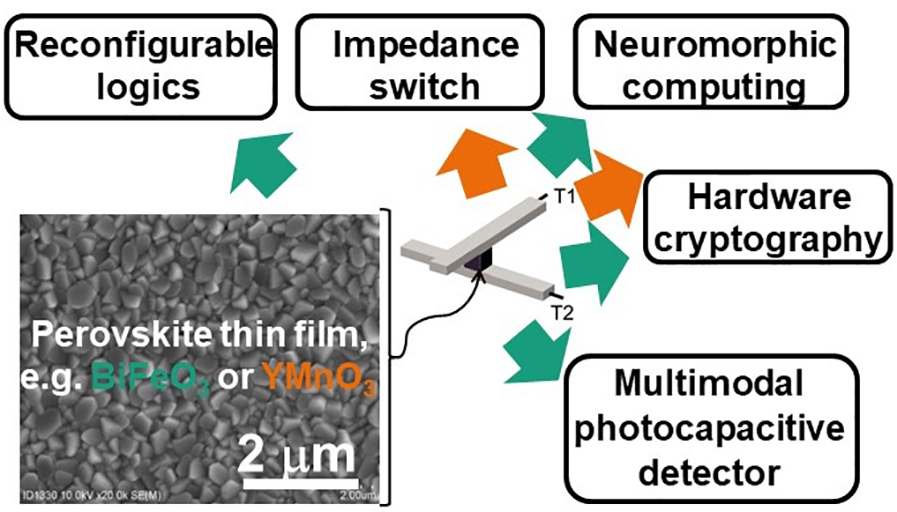Non-volatile, reconfigurable resistance switches

The thriving of memristive oxide switches is arousing interest in the field-enhanced hopping transport of oxygen vacancies because memristive oxide switches exhibit ultra-nonlinear switching dynamics. Optimized performance requires resistive switching (SET and RESET) within tens of nanoseconds upon the application of a writing bias, and the ON and OFF resistance states should remain stable for up to ten years.
Field-accelerated ion mobility constitutes one such source of ultra-nonlinearity. The Mott-Gurney has been employed nonlinear ionic drift model to interpret the effect of an electric field on the nonlinear rate of ion transport in a memristive Au/BiFeO3/Pt/Ti metal-oxide-metal switch using a quasistatic statetest protocol. Memristive bismuth iron oxide (BFO) switches possess excellent bipolar switching performance, including long retention time and stable endurance even at elevated temperatures. Furthermore, due to the interface-mediated resistive switching, memristive BFO switches reveal zero Joule heating and electroforming-free resistive switching.
Thus, the measured increase in mobility of oxygen vacancies can be attributed unambiguously to the field enhancement rather than to temperature enhancement.
 Fraunhofer Institute for Electronic Nano Systems
Fraunhofer Institute for Electronic Nano Systems